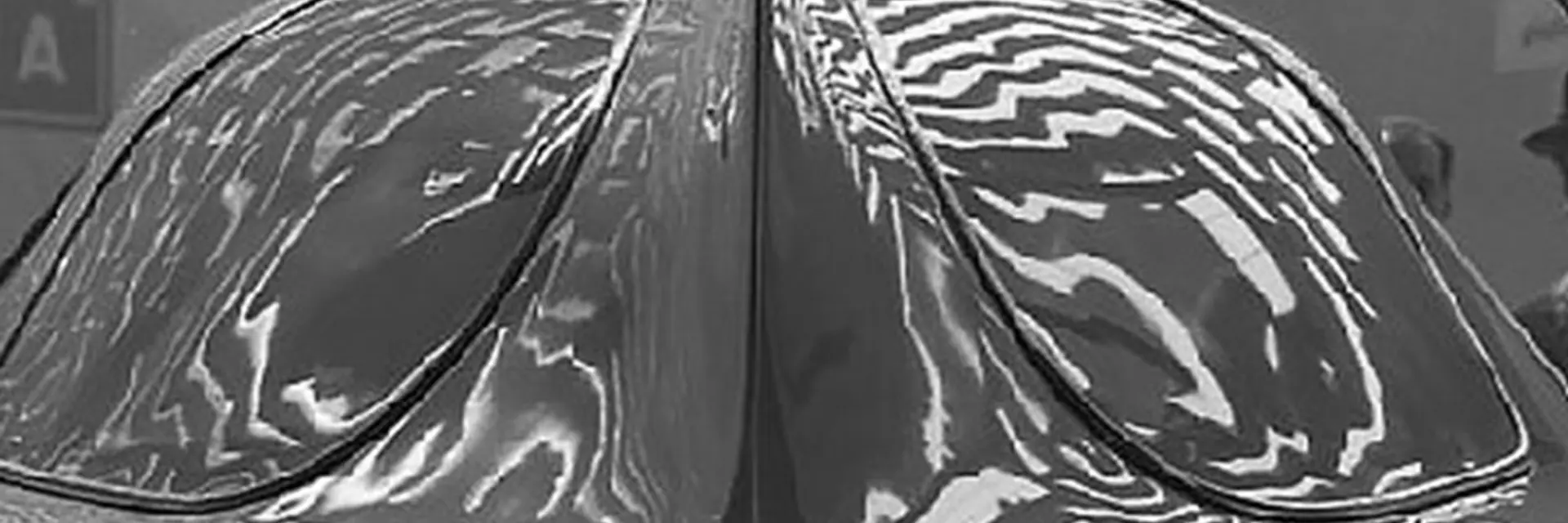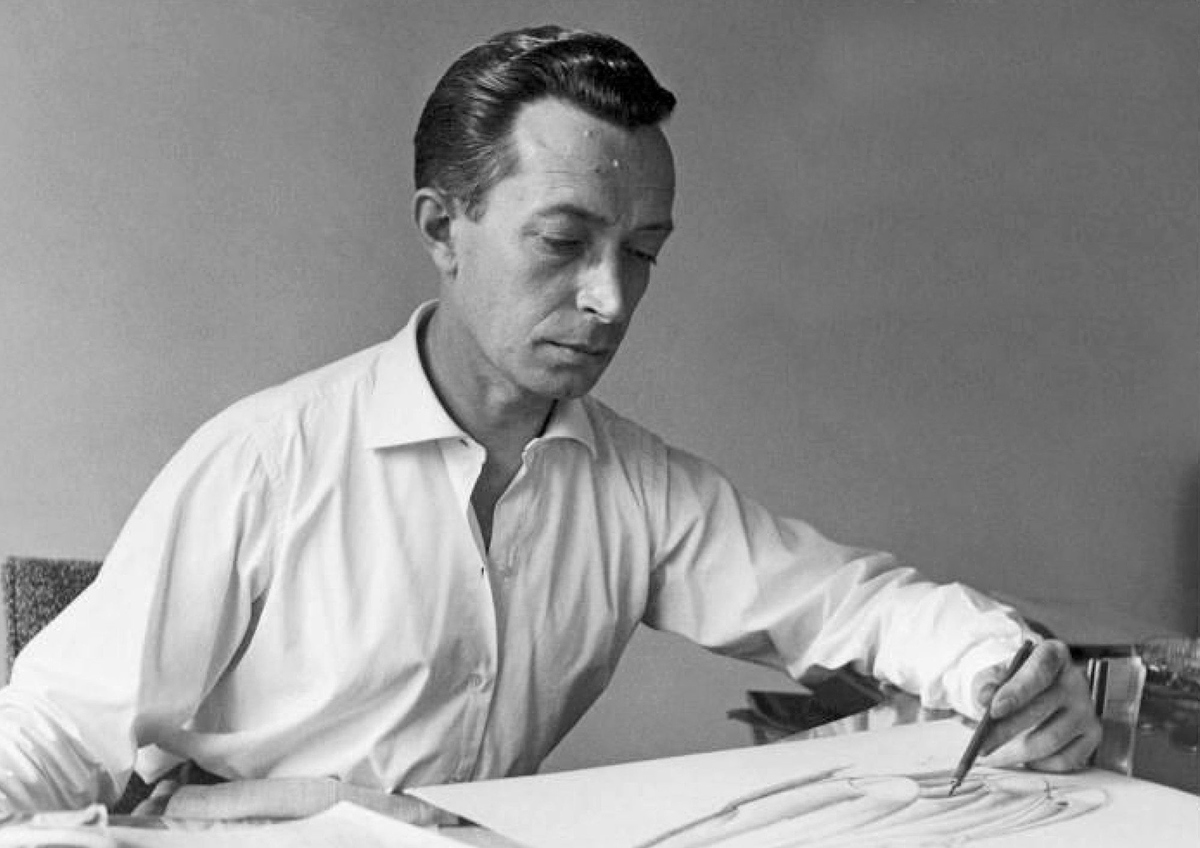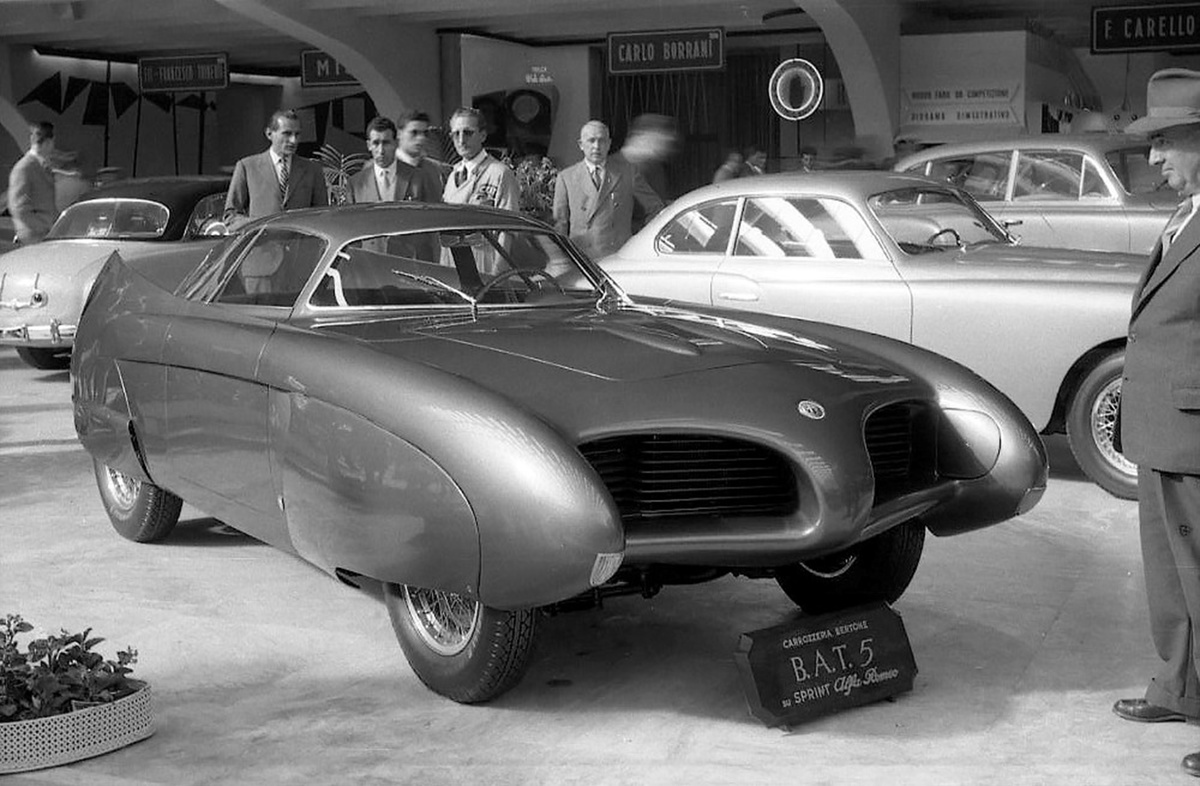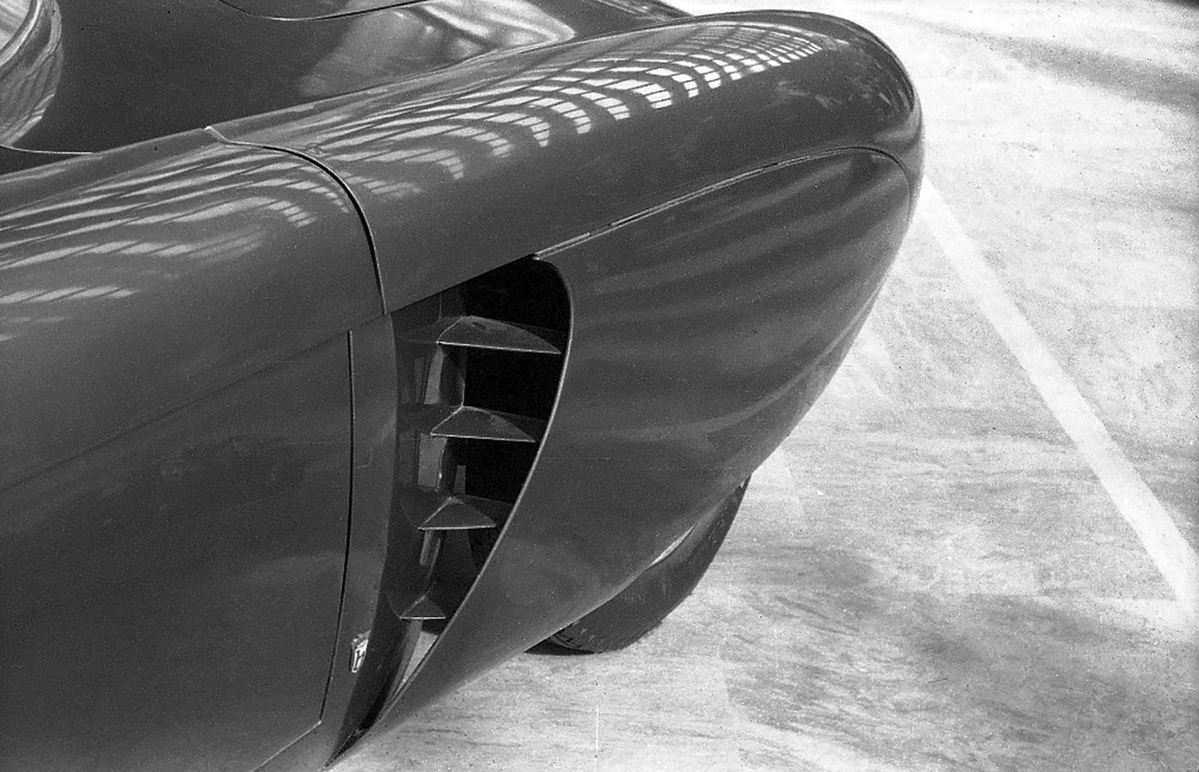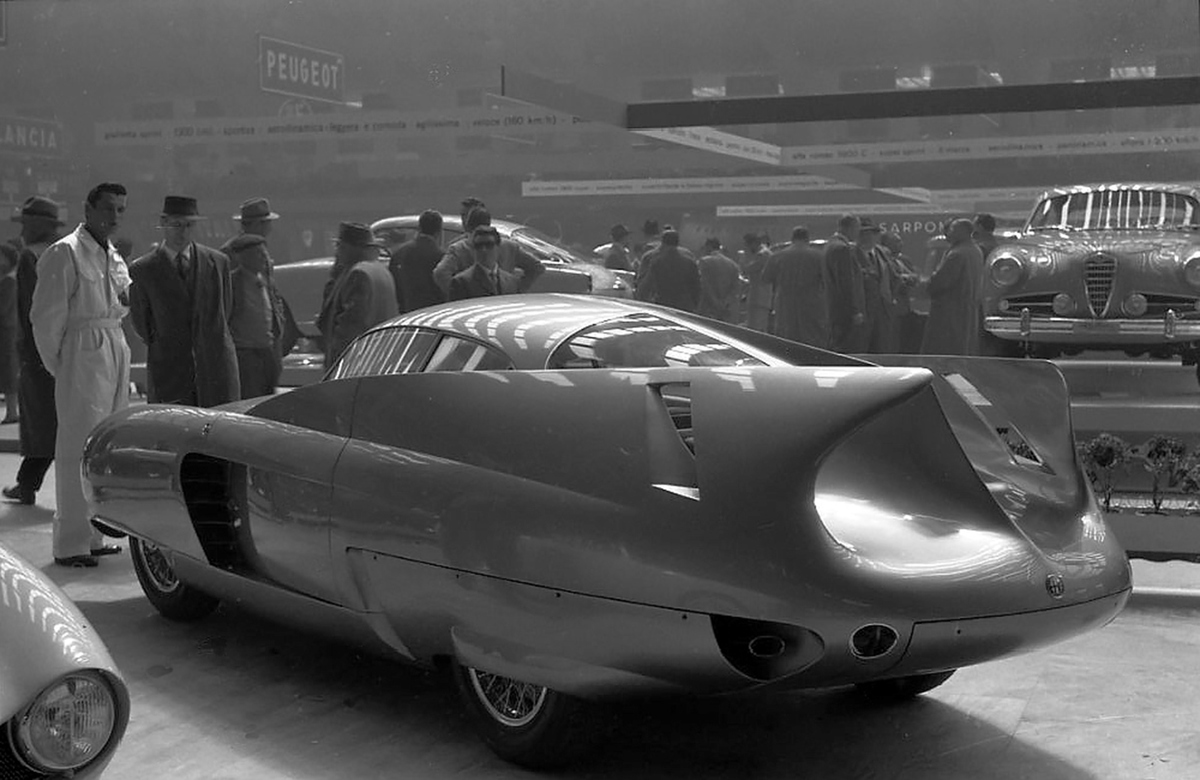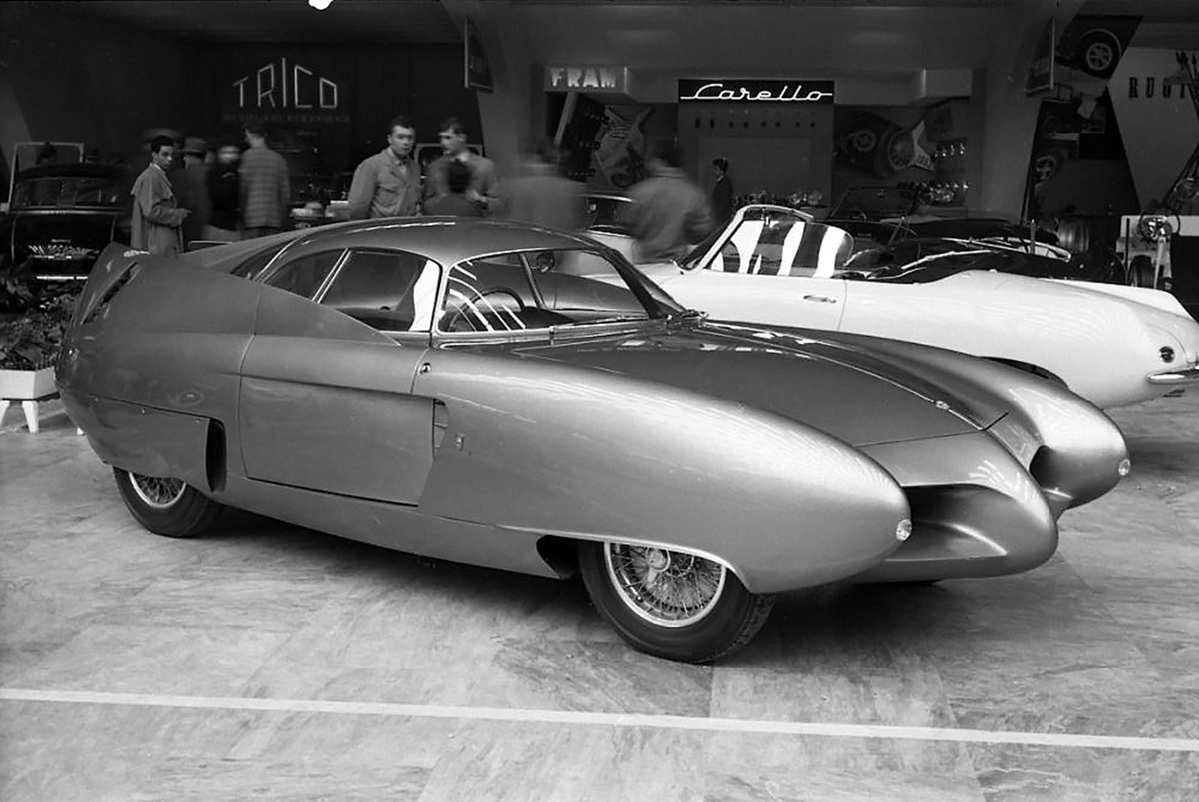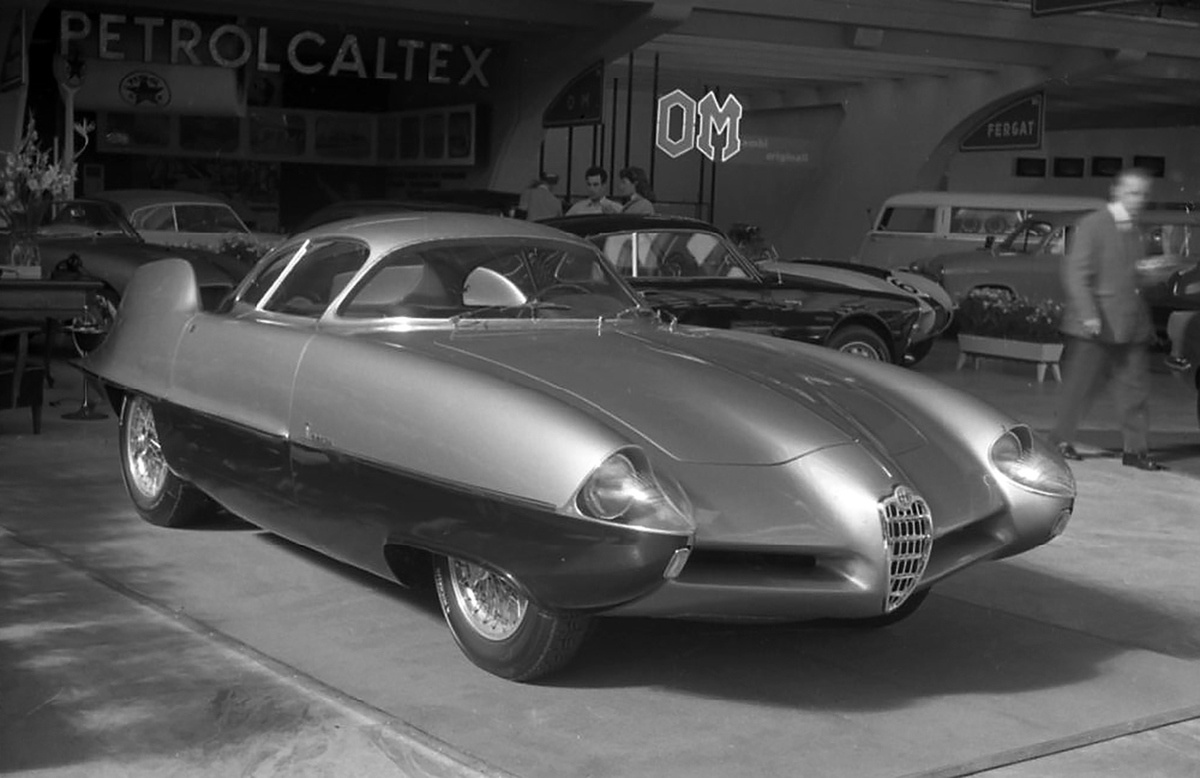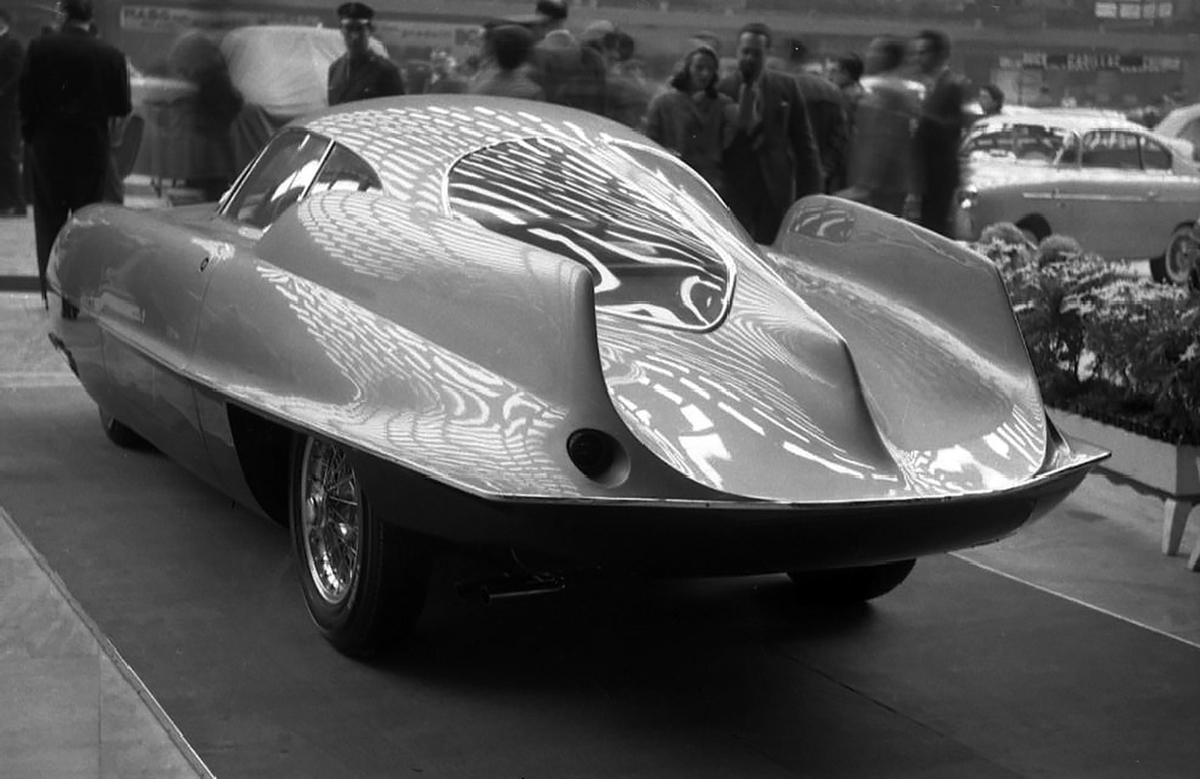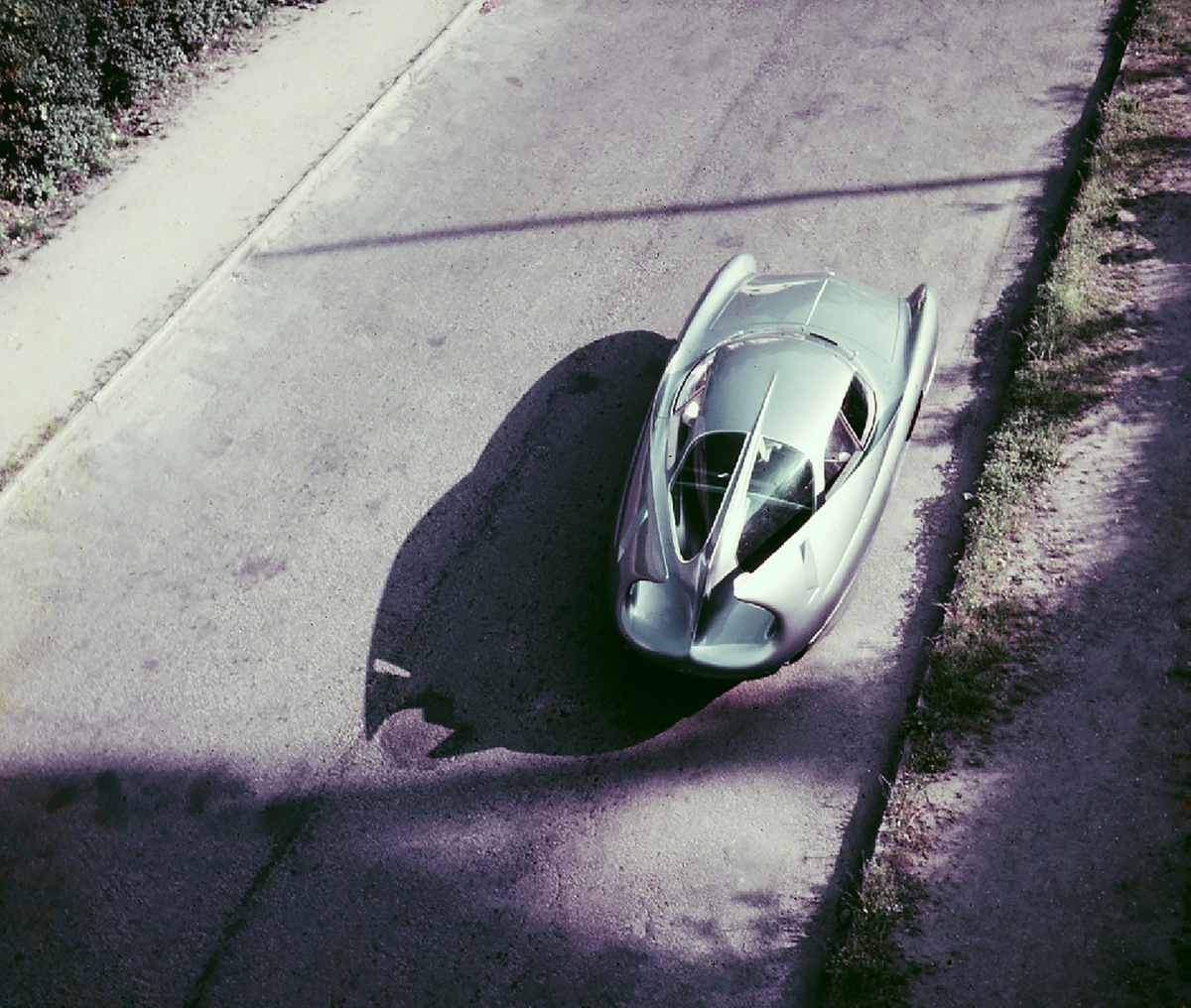A true renaissance man, a lover of classical music and animals, Franco Scaglione studied aeronautics and designed for Italian fashion houses before achieving arguably his greatest success: The trilogy of Alfa Romeo B.A.T. concept cars.
When looking at these wonderful period images of the B.A.T. cars on display, it is important to remember these futuristic shapes were born of Scaglione’s intuition; drawn into existence by his left hand. No wind tunnels were used in the making of these extraordinary cars.
Courtesy of The Klemantaski Collection
Born into a family with status, Scaglione’s medically-minded mother and father served, respectively, as a nurse in the Italian Red Cross and a doctor in the Italian Army. It was a given that Franco and his brother Eugenio would also enlist. Even from an early age, the youngest Scaglione was interested in aeronautics; his aim was to join the Italian Air Force. Sadly for Scaglione, his nearsightedness prevented him from piloting airplanes, so he instead enrolled in the University of Florence and learned the then-new aerodynamic theories of Paul Jaray and Wunibald Kamm, earning a formal degree in the subject in 1937. The following year, Scaglione planned to bring his theories into reality at the University of Bologna, pursuing a graduate degree in aeronautical engineering, but fate had other plans.
By 1938, twenty-three-year-old Scaglione had already earned the rank of sub-lieutenant in the 2nd Bridge Engineering Regiment of the Italian Army, but with the advent of war, Scaglione formally withdrew from school and volunteered to be sent to the frontlines in Libya. Three years later, he was captured by the British and sent to a prisoner’s camp in India, where he wasted for years “in absolute nothingness,” as his daughter, Giovanna, recalled in an extensive interview.
Scaglione had been captured on Christmas Eve, 1941. He was reunited with his mother on Boxing Day, 1946. Biographies of Scaglione always mention the following year, which Franco spent living with his mother in Calabria, Italy, recovering from his imprisonment and mourning his brother, Eugenio, who died during the war. No doubt Scaglione wore the scars of combat, but this is not the end of his story.
Courtesy of The Klemantaski Collection
After the war, a stroke of fortune—Scaglione met and married his wife Maria Luisa Benvenuti in 1946; their daughter, Giovanna (named for Scaglione’s beloved mother) was born in 1948. With his optimism undiminished, Scaglione submitted sketches to the top coachbuilders of the era: Pinin Farina and Bertone. They both politely decline. Part of the problem was one of credit: Neither coachbuilder was willing to display Scaglione’s name as equal to their own. Almost akin to the apprentice workshops of Renaissance sculptors, coachbuilders like Pinin Farina and Bertone affixed their names to the best work done by the designers in their employ, obscuring the history and enjoying all the accolades. That was not sufficient for Scaglione.
Courtesy of The Klemantaski Collection
On his second attempt to break into the exclusive world of Italian coachbuilding in 1951, Scaglione opted for a more direct route and moved his family to Torino, approaching figureheads like Battista “Pinin” Farina and Guiseppe “Nuccio” Bertone when they were at their most magnanimous, representing their companies on stage at major auto shows. In person, Scaglione was able to better explain the aerodynamic principles that he wanted to explore in his automobile designs. Pinin Farina politely rejected him once again, but this time, thirty-four-year-old Scaglione had better luck with Bertone.
Nuccio recalled meeting Scaglione a bit differently: “He had no auto background, but in his heart he wanted to become a designer. He came from an old, respectable family, spoke four languages and was intelligent. I proposed he work for me, on the condition that he would adapt his somewhat revolutionary ideas to my practical observations to keep them realistic.” From the beginning, one can observe a rift forming between Bertone and Scaglione: A classic battle between art and commerce.
Courtesy of The Klemantaski Collection
In spite of Bertone’s backhanded compliments, Scaglione was already an active automotive designer when the two met. While it is not clear Bertone ever offered to properly credit Scaglione’s designs (period publications like Road & Track and MotorTrend commonly attributed styling to Bertone as an entity instead of any one designer), he at least allowed Scaglione to continue taking freelance design commissions while working out of a tiny office next to the Bertone factory. Along with another well-regarded designer, Giovanni Michelotti, Scaglione contributed to Bertone’s first big commission—one hundred coachbuilt MG coupes and an equal number of convertibles, both ordered by American auto promoter Stanley “Wacky” Arnolt.
Soon, Bertone was so swamped with work that Scaglione was tasked to bring full designs into existence. His first effort, the one-of-one 1952 Abarth 1500 Biposto, has an undeniable aeronautical flair, its front fenders sculpted to resemble twin jet engines. From the rear, a pair of tailfins that point towards what was to come. Scaglione’s airplane-like Abarth was so forward-thinking, it was bought off the stand at the Turin Motor Show in 1952 by James Nance, the President of Packard Motor Company, and shipped back to the company’s styling studio, in hopes of inspiring the Detroit-based designers.
Courtesy of The Klemantaski Collection
Perhaps in light of Scaglione’s skill with futuristic concepts, his next project for Bertone could not have been a better fit. Alfa Romeo was having trouble with the aerodynamics of their voluptuous Disco Volante race car and needed to find a solution for rear-end lift that developed at high speeds. The project was a point of pride for Bertone himself, as he was reportedly turned down for the bid to design the Disco Volante in the first place. Though Bertone’s bid was lower than rival Touring, Alfa Romeo opted for Touring’s “Superleggera” construction method; if Bertone could deliver a car designed for speed, it would mean bragging rights as well as the possibility of future commissions.
To say that the B.A.T. 5-7-9d delivered on this goal would be a drastic understatement. We will take a deeper dive into the individual B.A.T. cars and the designs they influenced later this week. Perhaps the most incredible thing that could be said about the B.A.T. series is that the fantastical design is actually functional, with all three examples exhibiting drag coefficient figures that would still land them in the top ten most aerodynamic cars on sale today. Their extreme forms are, in fact, functional.
Courtesy of The Klemantaski Collection
Predictably, the B.A.T. concepts made a huge splash on the international motor show circuit, leading to Scaglione’s two greatest hits in terms of production figures—the NSU Sport Prinz and Alfa Romeo Giulietta Sprint. Unfortunately, the B.A.T. concepts would also mark an inflection point for Bertone and Scaglione’s working relationship. Scaglione’s daughter Giovanna describes it, “Bertone was a little bothered when it happened that in a magazine article they wrote about Franco Scaglione and not Bertone… For example, in an article speaking of one of his works [Scaglione’s] name was mentioned three times and the name of Bertone was mentioned only once…” Though Giovanna does not attribute her father’s sudden departure from the firm to this incident alone, it was clear that Scaglione wanted to strike out on his own, so that year, he handed over the title of chief stylist to Giorgetto Giugiaro and left Bertone for good.
Courtesy of The Klemantaski Collection
Though Scaglione’s design portfolio spans nearly sixty cars in total, the B.A.T. concepts were an achievement never to be surpassed. After heavily investing his own fortune in the success of the Intermeccanica Indra, which sold only 27 copies, Scaglione retired in defeat to a small town, Suvereto, Italy, and succumbed to lung cancer on 13 June 1993. One month before his death, he received a letter from his old colleague Nuccio Bertone, who had seemingly buried all grudges:
“I remember with great emotion your contribution to our projects we had at that time; I remember your sharpness into the shapes of the futuristic cars; I also remember our fierce discussions due especially looking for the excellence…Your passion and knowledge for aerodynamics brought you to high levels and I couldn't do anything but follow you.” High praise from a man like Bertone.
Sculpted by aerodynamics, on sale for the first time ever as a trio in an exclusive auction by RM Sotheby’s, the B.A.T. cars transcend the medium of the automobile into the realm of fine art. Raise a glass for Franco Scaglione; certainly he has earned the accolades after all these years.
Courtesy of The Klemantaski Collection

